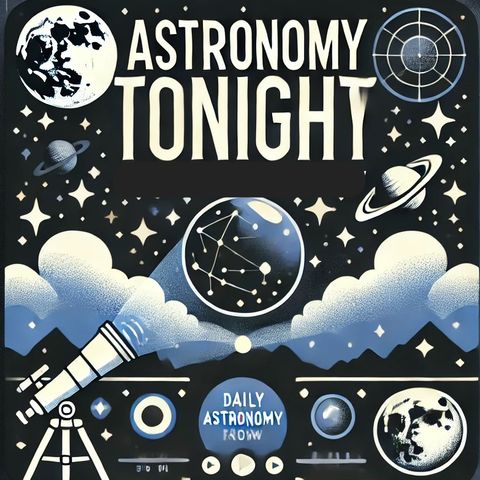Astronomy Tonight for - 09-29-2024

Sign up for free
Listen to this episode and many more. Enjoy the best podcasts on Spreaker!
Download and listen anywhere
Download your favorite episodes and enjoy them, wherever you are! Sign up or log in now to access offline listening.
Astronomy Tonight for - 09-29-2024
This is an automatically generated transcript. Please note that complete accuracy is not guaranteed.
Description
On September 29, 1962, Canada made its mark on the global space race with the launch of the Alouette 1 satellite from Vandenberg Air Force Base in California. This momentous...
show moreAlouette 1, named after the French word for "skylark," was a collaborative effort between Canada's Defence Research Telecommunications Establishment (DRTE) and NASA. The satellite's primary mission was to study the Earth's ionosphere, a region of the upper atmosphere that plays a crucial role in radio communications.
Weighing a mere 145 kg (320 lbs), Alouette 1 was a small but mighty spacecraft. It was equipped with a suite of instruments, including a swept-frequency sounder, to probe the ionosphere and gather data on its density, composition, and temperature. The satellite's unique design, featuring four long antennas that extended from its body like the wings of a skylark, allowed it to make detailed measurements of the ionosphere's properties.
The launch of Alouette 1 was a resounding success, and the satellite exceeded all expectations. Initially designed for a one-year mission, Alouette 1 continued to operate for an impressive 10 years, providing scientists with a wealth of data on the Earth's upper atmosphere. Its measurements helped improve our understanding of the ionosphere's behavior and its impact on radio communications, paving the way for more efficient and reliable communication systems.
Alouette 1's success also put Canada on the map as a serious player in the space race. It demonstrated the country's technological prowess and its ability to contribute to the global scientific community. The satellite's legacy lives on, with Canada continuing to be a leader in space-based research and technology.
So, the next time you make a long-distance call or use a GPS device, take a moment to remember the little Canadian skylark that helped make it all possible. Alouette 1 may have been small in size, but its impact on our understanding of the Earth's upper atmosphere and its role in paving the way for modern communication technologies is immeasurable.
Information
| Author | QP-4 |
| Organization | William Corbin |
| Website | - |
| Tags |
Copyright 2024 - Spreaker Inc. an iHeartMedia Company
